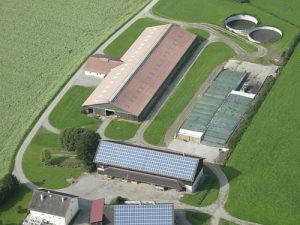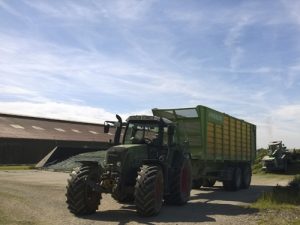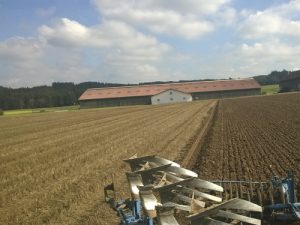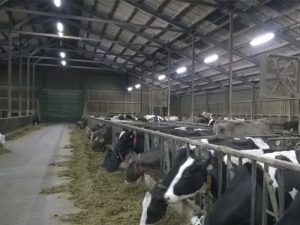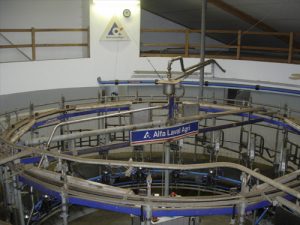Reutehof GbR is a company in which 3 family farms have jointly built a sustainable dairy cattle shed. For more than 20 years, the company has produced milk in a highly optimized manner, especially in relation to animal husbandry and land management.
Currently, the operation is facing significant difficulties, as no successor can be identified from two of the families to join the business.
Similar to the construction phase and on-going / daily operations, there needs to be transparency and effective communication at the curtailment (exit phase) of a cooperation activity. The Wechsel family will take over the full operation of the farm / business.
Basic information
Area: 175ha
The Reutehof GbR operates today in a stable with 180 dairy cows. The calves are additional.
The cooperation activity entailed the merger of the animal husbandry of 3 farms into a single stable. The construc- tion of the stable took place in 1998 after extensive planning and advice on legal and taxation structures.
Today, all three families look back on a very successful period, and are preparing for the next step - the dissolution of the GbR in order to create a single farm enterprise from the current operation.
Without the cooperation and merger of the three farms, a comparable development would not have been possible. The type of project was not common in the region and it was considered very innovative. It received significant in- terest from various agricultural stakeholders operating in the region.
All 3 farms were of comparable size between 30 and 50 dairy cows and 30 to 70 ha of agricultural land. Each farm was faced with the decision of how to make their respective holding sustainable into the future. The families had known each other for a long time. This opened a communication channel for discussion and decision making with respect to the merger of three farms into one single entity.
Today, the three families work closely together in all decision making activities, especially in the investment in stabling and technology for animal husbandry and for doing the field work. The fixed costs of production have been minimized through jointly working together.
Accordingly, the company is well positioned today for further development - both in the area of production and mar- keting.
With regard to tax and corporate law, there is the real estate holding company and the operating agricultural com- pany which rents the buildings.
The agricultural land and existing farms remain within the property of the three families. They are required to lease the infrastructural assets to the operational GbR.
This is also regulated in the event of dissolution of the company and continuation by one of the shareholders. In this respect, sufficient land and resources for operating the enterprise (farm) is secured after transfer to sole ownership.
The Wechsle farm will continue the operation of the enterprise as a sole owner from summer 2018 onwards. The framer has gained valuable experience in cooperation through his partners and colleagues.
The development of the farm was a great success in terms of economic efficiency and the pursuit of routine tasks related to animal health; production standards; and quality of farm buildings.
In addition, there was a social value added that is not usually associated with dairy farming. Every third weekend, each farm family was not obligated to work on the farm. This was very important for providing sufficient rest-periods and engaging in family activities. During a period of illness, there was always someone available to cover routine tasks on the farm. According to the farmer, ‘there was always the certainty that the operation would continue in the usual way and with high quality - even if one of the key people was missing for a few weeks’.
The current transition to a sole proprietorship and the necessary compensation of the two other shareholders is rather challenging but procedures had been developed in advance.
It was always envisaged that a shareholder might divest. Each member in the consortium wanted this type of co-operation to continue, but it was clear to all from the beginning that the next generation did not want to engage in farming. In 1996, all three farmers clearly opted for cooperation. A continuation of the farming enterprise with the successor generation was not guaranteed from the outset. It was agreed by the farmers, it was their children’s decision on whether the co-operation would continue into the future.
Decisions in the consortium were always taken by simple majority. As long as the same entrepreneur is not overruled continuously, the decision making process by a simple majority was unproblematic. So the positive experiences and opportunities offered by this type of cooperation outweigh the challenges.
According to the farmer, the following skillsets and competencies were identified as key conduits for embarking on a successful co-operation activity with other farmers:
- Similar personalities and mind-set
- Mutual commitment
- Acceptance of different opinions
- Mutual acceptance
- Constant communication
- Transparency
Advice/Recommendation
"The most important thing is that people have to fit together and trust has to be built amongst all of the stakeholders."
Queries/Questions
- Identify the criteria and procedures a farmer should consider when selecting part- ners to engage in a cooperation activity?
- On the curtailment of a co-operation activity, what are the essential issues a famer should consider?
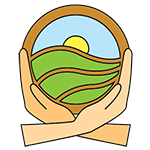


 Čeština
Čeština  English
English  Français
Français  Deutsch
Deutsch  Italiano
Italiano  Slovenščina
Slovenščina  Español
Español 